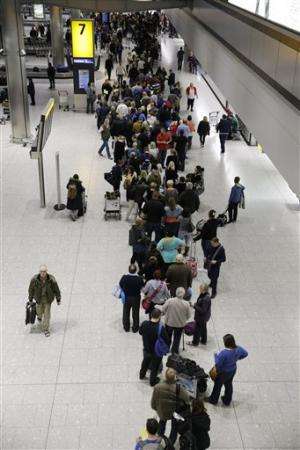
- AIRPORT UTILITY WAS UNABLE TO FIND HOW TO
- AIRPORT UTILITY WAS UNABLE TO FIND MAC OS X
- AIRPORT UTILITY WAS UNABLE TO FIND MAC OSX
- AIRPORT UTILITY WAS UNABLE TO FIND PASSWORD
- AIRPORT UTILITY WAS UNABLE TO FIND PLUS
Once installed and started, select the capture option and fill out the dialog as follows: (Note: this requires that X11 be installed - for OS X 10.8, this means downloading and installing Xquartz.) This is a free program that can be downloaded from. Once you have finished the trace, push the “Stop Capturing” button and click on “Continue”, a dialog will ask to either save the report to the Finder desktop or send it via an email.Īnother option on the MAC to capture a wireless trace is to use Wireshark. The trace will start after pushing the “Start Capturing” Button. as you want to capture all data send and received on the network since we are using the sniffer to capture another wireless client’s frames In order to capture a complete wireless trace, select “Capture Raw Frames”.Ĭheck the box to disconnect from the network and select the channel that is being used by the client that are you sniffing. Here is an example of using the tool to capture raw Wireless frames that can be heard by the MAC.
AIRPORT UTILITY WAS UNABLE TO FIND HOW TO
Here is any example of how to enable the Debug logs to be taken, this will allow you to see all messages that occur at the driver and supplicant level on the MAC Here is any example of using the tool to record Wi-Fi Events: Here is a example of using the tool to monitor Wi-Fi Performance: There you will find the Wi-Fi Diagnostics program.

Normally this folder is not easily accessible so a quick trick is to open the “Finder” and use the "Go to folder" (“Shift-Command-G”) option this will open up a dialog box in which you can enter “/System/Library/CoreServices” and press return.
AIRPORT UTILITY WAS UNABLE TO FIND MAC OSX
If you are running MAC OsX 10.7 (Lion), you can use the graphical program called Wi-Fi Diagnostics.
AIRPORT UTILITY WAS UNABLE TO FIND PLUS
Tcpdump: listening on en1, link-type IEEE802_11_RADIO (802.11 plus radiotap header), capture size 65535 bytes Tcpdump: WARNING: en1: no IPv4 address assigned When done, type Control/C to exit.īash-3.2# tcpdump -I -P -i en1 -w /tmp/channel-11.pcap

(The tshark utility bundled with Wireshark is very similar.) To perform a wireless packet capture using tcpdump: Tcpdump is a command line utility shipped with OS X that can perform packet capture. # sudo /System/Library/PrivateFrameworks/amework/Versions/Current/Resources/airport –I Guest 00:22:75:e6:73:df -64 6,-1 Y - WPA(PSK/AES,TKIP/TKIP) WPA2(PSK/AES,TKIP/TKIP)ĭetailed information on the current association: SSID BSSID RSSI CHANNEL HT CC SECURITY (auth/unicast/group) # sudo /System/Library/PrivateFrameworks/amework/Versions/Current/Resources/airport -s # sudo /System/Library/PrivateFrameworks/amework/Versions/Current/Resources/airport -channel=48 # sudo ln -s /System/Library/PrivateFrameworks/amework/Versions/Current/Resources/airport /usr/sbin/airport Note: because the path to the airport utility is so ugly, it may be a good idea to set a symbolic link to it from a directory in the path, e.g. Also, it has the ability to set the default wireless channel - which is crucial for sniffer programs (tcpdump, Wireshark) that are themselves unable to set the channel The airport utility is is not a sniffer program however, it can provide interesting information about the wireless LAN. The file format is your standard wireshark PCAP file that can be read on the MAC or Windows via Wireshark.
AIRPORT UTILITY WAS UNABLE TO FIND PASSWORD
You will be prompted to enter in your account password for verification.“sudo /usr/libexec/airportd en1 sniff 11” Once you have a terminal window open, you can run the follow command to capture a Wireless sniffer trace on RF channel 11 (802.11b/g):.Use the “command” + “Space bar” key combo to bring up the search diaglog box in the upper right top of the screen and type in the word “terminal”, this will search for the terminal application, select this application to run it.If you are running OS X 10.6 (Snow Leopard) or above, then you can easily use the command line utility “ airportd”. This document covers OS X 10.6 through 10.8. However, depending on what versions of OS X you are running, the commands may vary.

AIRPORT UTILITY WAS UNABLE TO FIND MAC OS X
Wireless sniffing on the Mac works well, as Mac OS X has built in tools to capture a wireless trace.


 0 kommentar(er)
0 kommentar(er)
